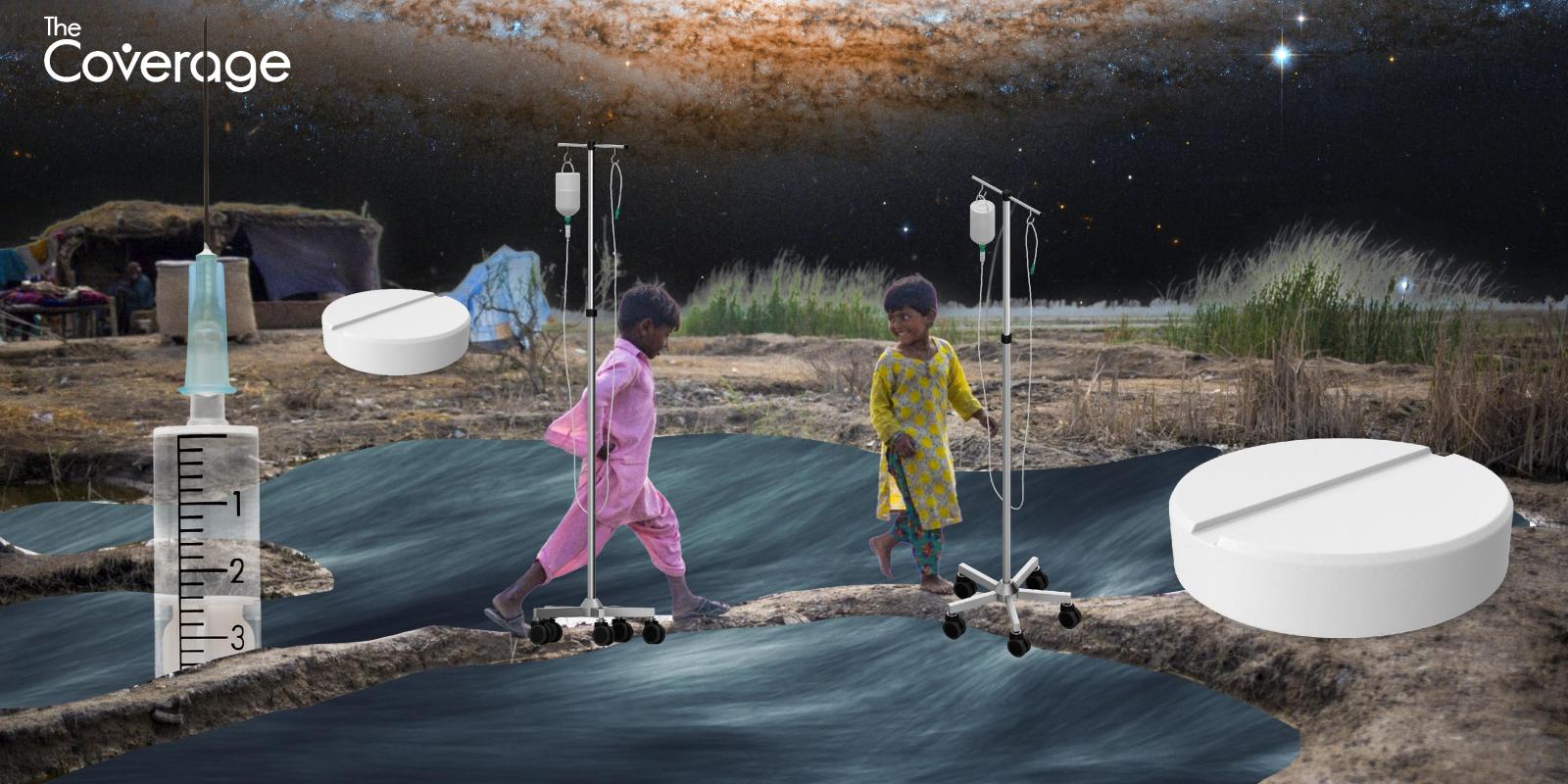The World Health Organization reveals 10 health advances in 2023, pointing out that the global health system as a whole is improving. Increase access to essential health services in many areas. There are initiatives to use digital technology. And leaders made new commitments focused on caring for vulnerable populations.
Despite many challenging factors Whether disasters are likely to increase Difficulties in the work of medical personnel or the occurrence of epidemics But the World Health Organization emphasizes that the health system as a whole continues to move forward with many successes over the past year.
This success gives hope to many countries. And it is a reminder to never give up on efforts to develop the health system. To give every population access to universal services
Here are 10 public health advances this year.
1. Countries eliminate life-threatening infectious diseases.
The elimination of infectious diseases has made progress this year thanks to the cooperation of many countries. and taking measures to prevent disease within various countries Such is the case with Azerbaijan, Tajikistan and Belize, which have been declared malaria-free countries.
Egypt has become the first country in the world to receive WHO “gold” status, enabling effective measures to reduce hepatitis B. And it is likely that this disease will be eliminated from the country within the next 7 years.
Bangladesh has been able to eradicate leishmaniasis. which is a contagious disease that is carried by insects And when infected, there is a 95% chance of death. It is considered the first country in the world to successfully eliminate this disease. In addition, Bangladesh and Laos have also been able to successfully reduce the spread of lymphatic filariasis. Until the disease was successfully removed from the list of disease surveillance groups.
2. Expanded vaccination The development of new vaccines is advancing.
Even though the World Health Organization announced downgrading the threat level of COVID-19 on May 5, vaccination against the disease continues to move forward to achieve herd immunity. Data at the end of November showed that 72% of the world’s population had been vaccinated against COVID-19. At least one needle has been completed. More than 1.36 billion vaccine doses have been administered.
Meanwhile, vaccination against other diseases has begun to recover. After being disrupted during the epidemic crisis The World Health Organization has approved the use of antimalarial vaccines in African countries. And there has been progress in developing a vaccine against meningitis. which is currently in the process of planning vaccination guidelines
A dengue vaccine has also been officially launched this year, and 30 countries around the world have initiated HPV vaccinations for young women, including Bangladesh, Indonesia and Nigeria, which have higher rates of oral cancer. The uterus is quite high. As a result, there are currently 140 countries where people have access to this type of vaccine.
3. Increase preparedness ability and respond to health crises
One of the good news of this year is an announcement to cancel the state of emergency during the COVID-19 outbreak. and monkeypox and the development of a framework for preparing and responding to health emergency situations. This is a collaboration between the World Health Organization and member countries. and will lead to concrete measures in various countries.
The World Health Organization is also supporting countries in responding to a total of 65 crisis situations this year. It is 22 new incidents, including wars, that have disrupted health services in Burma, Ukraine, Sudan, Ethiopia and the Democratic Republic of the Congo.
The World Health Organization has moved resources to find and prevent infectious diseases in these countries. Raise the level of public health services Increase the potential of local hospitals Training medical personnel Support medical equipment and medicines and develop infection testing rooms
Disaster side This year has seen many events in many countries, including earthquakes in Afghanistan, Nepal and Syria, and severe flooding in Libya, Pakistan and South Sudan. The World Health Organization has supported emergency medical services in the area. Working with more than 900 organizations to help more than 107 million people in 29 countries.
4. 130 countries have adopted the Climate and Health Declaration.
During COP28 or the 28th United Nations Climate Change Conference in Dubai, United Arab Emirates, in December, more than 130 countries adopted the Climate Declaration and Health (COP28 UAE Declaration on Climate and Health) and pledged to protect its population from health threats caused by climate change.
5. Raise the level of prevention and care for patients with chronic non-communicable diseases.
This year, Mauritius and the Netherlands became the first countries in Africa and Europe respectively. that implements a full-scale tobacco control policy as recommended by the World Health Organization Currently, 5.6 billion people, or 71% of the world’s population, are protected from tobacco-related health threats. Through the implementation of at least one of the policies recommended by the World Health Organization.
In terms of blood pressure disease Many countries have taken measures to improve disease prevention, such as India, which initiated blood pressure screening measures this year. The goal is to bring patients with high blood pressure and diabetes into care by 2025, while the Philippines begins expanding its cardiovascular disease prevention and care program.
6. The number of deaths from road accidents has decreased.
Reducing the number of road traffic deaths has also made progress this year. It was found that the number decreased by 5% compared to 2010. There are also 10 countries that reduced the number of deaths by more than 50%. However, continued work is still required to reduce the dangers of road accidents. This is especially true in low- and middle-income countries.
In May, the World Health Assembly adopted the first drowning prevention declaration in history, forcing 194 countries around the world to take measures to prevent drowning deaths. Up to 236,000 people die from drowning per year, especially among children aged 1-4 years.
7. Increased access to reproductive health services
This year marks the 50th anniversary of the United Nations Human Reproduction Programme. which supports research and measures to promote reproductive health around the world Whether it is increasing access to birth control pills, pregnancy care, and safe abortions;
This year’s survey found a significant decrease in the number of mothers who died from postpartum hemorrhage. Partly because of continuous projects in this area. A roadmap for reducing those suffering from postpartum hemorrhage was also launched in October.
Many countries have also pledged to eliminate cervical cancer from their countries, such as Australia and the United Kingdom. It plans to completely eliminate cervical cancer within the next 10 and 17 years, respectively. One of the main measures is to increase access to the HPV vaccine.
8. Increase access to medicines and health products
This year, South Korea, Singapore and Switzerland Became the first three countries in the world to receive certification for drug and health product standards from an agency accredited by the World Health Organization. It reflects the commitment of many countries to upgrade the production of medicines and health products.
The World Health Organization has also updated its list of essential medicines and treatments (WHO Essential Medicines List), adding medicines for multiple sclerosis and cancer. This will promote the development of drugs and treatment modalities for this type of disease. and must be accessible to low- and middle-income countries.
In addition, the Essential Diagnostics List has been improved by adding 8 new items, such as diabetes self-examination. Self-checking sugar levels and testing for hepatitis B, etc.
9. Countries make new promises. Reduce health inequality Upgrading primary care services
In May, the World Health Assembly passed a resolution on tribal health. This indicates the need to reduce health disparities in this population. It also has certification. “Rabat Declaration” in June, in which countries pledged to take care of the health of the mobile population Including populations that were separated from their home countries because of war.
In August, the World Health Organization and its network jointly organized the first World Traditional Medicine Conference. To find ways to bring alternative medicine into public health care.
In September, during a meeting of the top leaders of the United Nations General Assembly Many countries have adopted the new political declaration. It aims to achieve universal health coverage by 2030 by promoting primary care medicine. The Political Declaration to Eliminate Tuberculosis was also adopted during the same meeting.
10. Open the digital health projectIn October, the World Health Organization published guidelines on the use of artificial intelligence for health. Emphasis on setting guidelines for regulating artificial intelligence technology used for disease treatment and diagnosis. Including reducing risks from various factors such as unethical use of patient information. and cyber threats
In addition, the World Health Organization and the G20 Group jointly announced the Global Digital Health Initiative. During the G20 meeting chaired by India The project focuses on managing the networks and platforms used to implement the digital health strategy for the period 2020-2025.
The World Health Organization is also working with the European Union on a project to create digital COVID-19 certificates for international travel during pandemic control measures. This is one of the advancements in the development of digital health products. for access to the health system for every citizen
2023-12-27 02:58:17
#advances #global #health #TheCoverage.info


